Introduction to Datree and prevent Kubernetes misconfiguration from reaching production using Datree
 Hasnain Makada
Hasnain Makada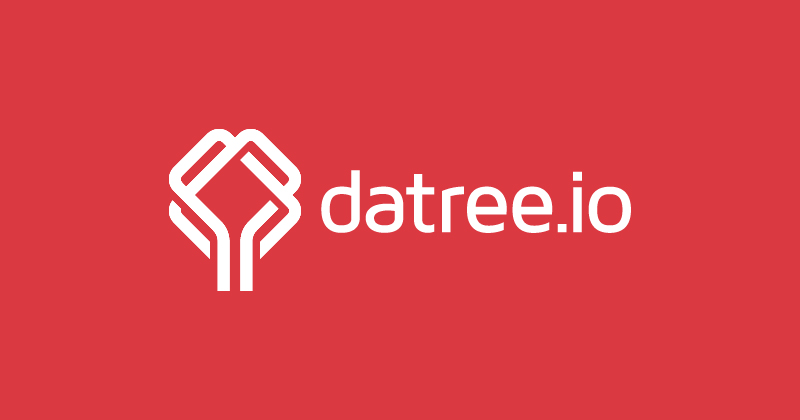
Introduction
Hey everyone in this blog I'm gonna talk about what is Datree and how Datree prevents your Kubernetes misconfigurations from reaching your production environment. You may be confused what is production enviroment ? so let me break it down for you,
There are mainly 2 types of environments are there when you are developing something, It can be anything website, application etc. Development & Production environment, In the development environment you develop the application from scratch and when the application is working perfectly you push it towards the production environment, The production environment is used to deploy the application or website you designed to the end user who is going to use it.
Now that you know the difference between development & production let's move forward:
What is Datree ?
Datree is a tool which is used to prevent Kubernetes misconfiguration and it provides developers a simplified Kubernetes deployment experience so they don't need to remember so many rules governing development
Datree is a CLI (Command Line Interface) tool that supports the Kubernetes owners by preventing developers to make mistake in the Kubernetes configurations which can cause clusters to fail in production.
How it prevents misconfigurations ?
When you are working with Kubernetes there are chances that when you create a pod, sometimes we make mistake in the YAML file, whether it can be indentation mistake or a version tag is not there etc. So Datree analyzes your whole file which you have given to it and it has a set of policies and rules with which it validates your file. If your file follows the rules and policies of Datree then you're good to go otherwise it will tell you to improvise your file.
Steps to install Datree
The following steps helps you to install Datree in your local system, make sure that your docker desktop is up and running on your system
For windows
Open PowerShell and run it as administrator
Then paste this command into it
iwr -useb https://get.datree.io/windows_install.ps1 | iex
- After it will take some time to install
After it has been installed close and open your PowerShell again and run the
datreecommand in itIt will show you the output as below:
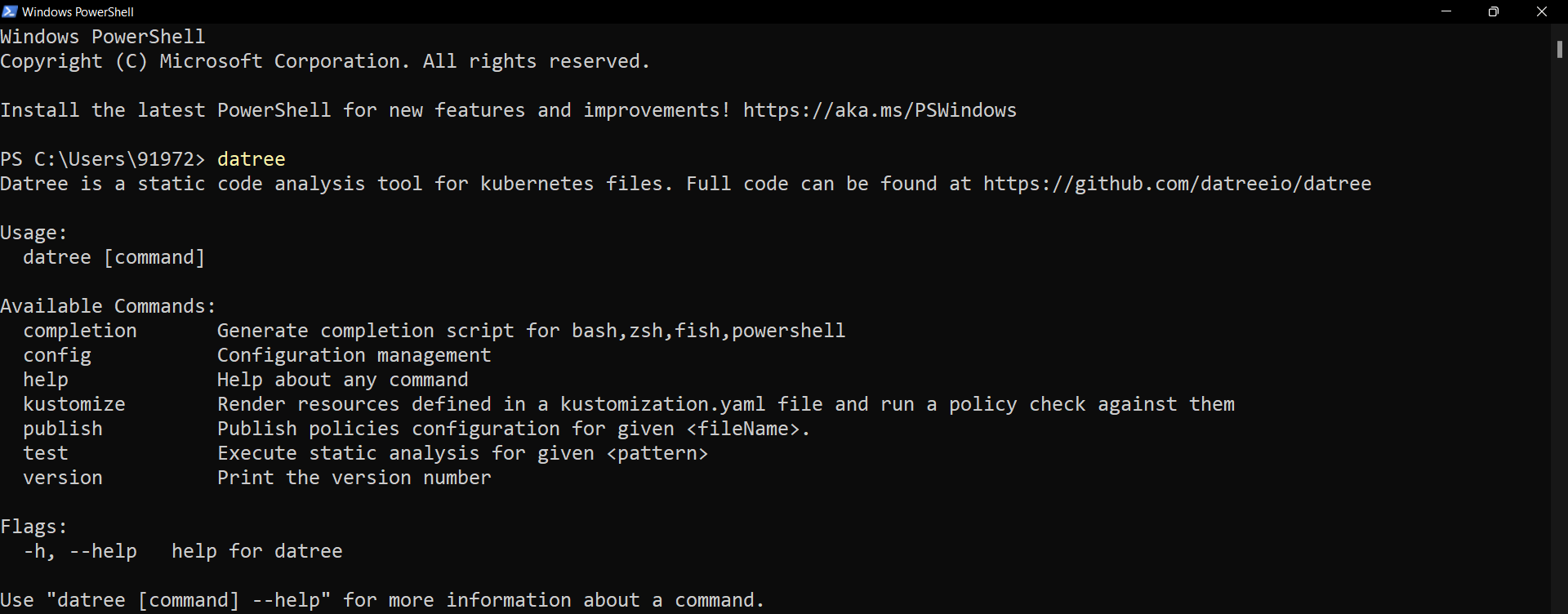
You have successfully set up Datree on your machine
For Linux and mac users make sure to check out this link
Usage using Datree's demo configuration file
Now we've installed Datree it provides us a demo configuration which we can use to test it. Datree also provides us a dashboard in which we can see the history that how many tests were conducted on our machine and we can also see the policies which datree uses while performing these tests.
You can sign into Datree and after installing it, it will be integrated automatically with your host machine with the access token provided to your machine.
The dashboard will look like this after logging in,

I've enabled all the policies on mine, but by default only 30 or 21 policies will be enabled.
Let's get started with Datree
- Open your terminal and create a new folder on your desktop or drive using the
mkdir <folder-name> - Navigate to the created folder using the
cd <folder-name> - And execute this command on your terminal
datree test ~/.datree/k8s-demo.yaml
After executing this command it will perform the tests on the k8s-demo.yaml file and the outputs will be as follows,
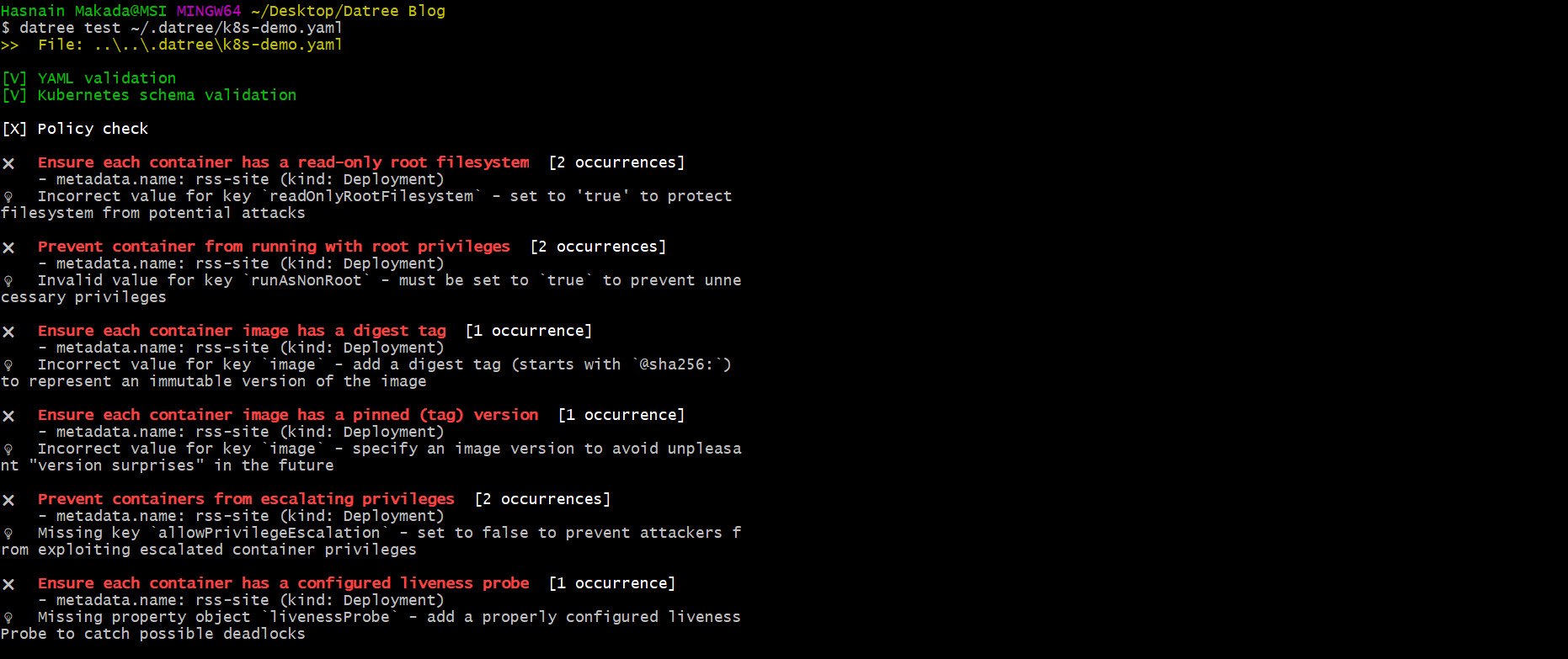
It will also show us a summary table in which it will tell us how many many tests were successful and how many were failed
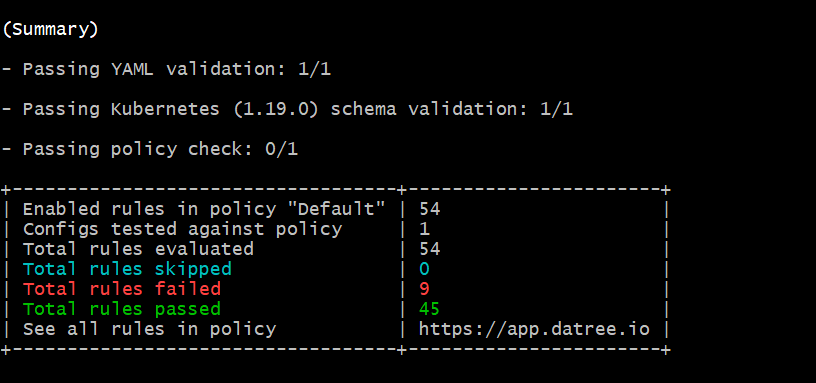
The Datree CLI perform 3 types of tests, YAML validation, Kubernetes validation and the policy checks which you've provided. Lets discuss each and every test which Datree performs.
YAML validation
The first test which the Datree CLI performs is the YAML validation check. It checks the syntax and indentation of the YAML file and makes sure that it is a valid YAML file
For more information refer.
Kubernetes schema validation
The second test which Datree performs is the Kubernetes schema validation. It performs the checks on the YAML files and ensures that it is a valid Kubernetes manifest file
This check is performed by the kubeconform tool which is built in with Datree.
Policy checks
The third check which Datree performs are the policy check which are defined by default in Datree, you can check them out in the Datree dashboard.
Datree provides so many inbuilt policies by default and you can enable or disable them and you can also specify custom error messages on the policy checks
If you want to understand about any policy, you can click on the i button here,

Creating our own policy
If you want to create your own policy in Datree for testing you create it in Datree dashboard. Click on the create policy button on the left and assign name to your policy and click on the check button, and that's it you own custom policy has been created.

After creating your custom policy you can decide which policies you want to keep in it and which to not by enabling or disabling them.
Changing policies using the YAML policy file
In Datree we can also customize our custom policies using YAML policy file which we can download from our Datree dashboard. Inside the policy file we can specify the policies the policies which we want to add in our own custom policy.
For downloading the policy file:
- Click on your profile in the Datree dashboard
- Then click on settings
- After clicking on the settings you will be redirected towards the setting page, Inside the setting page enable the
Policy as codeslider - After enabling go back to your dashboard and you can see the
Export Policiesbutton. - Click on the button and you can download your policies. It will download your all policies in a YAML file named as
policies.yaml - After downloading your policies open it in VS Code it will look something like this,
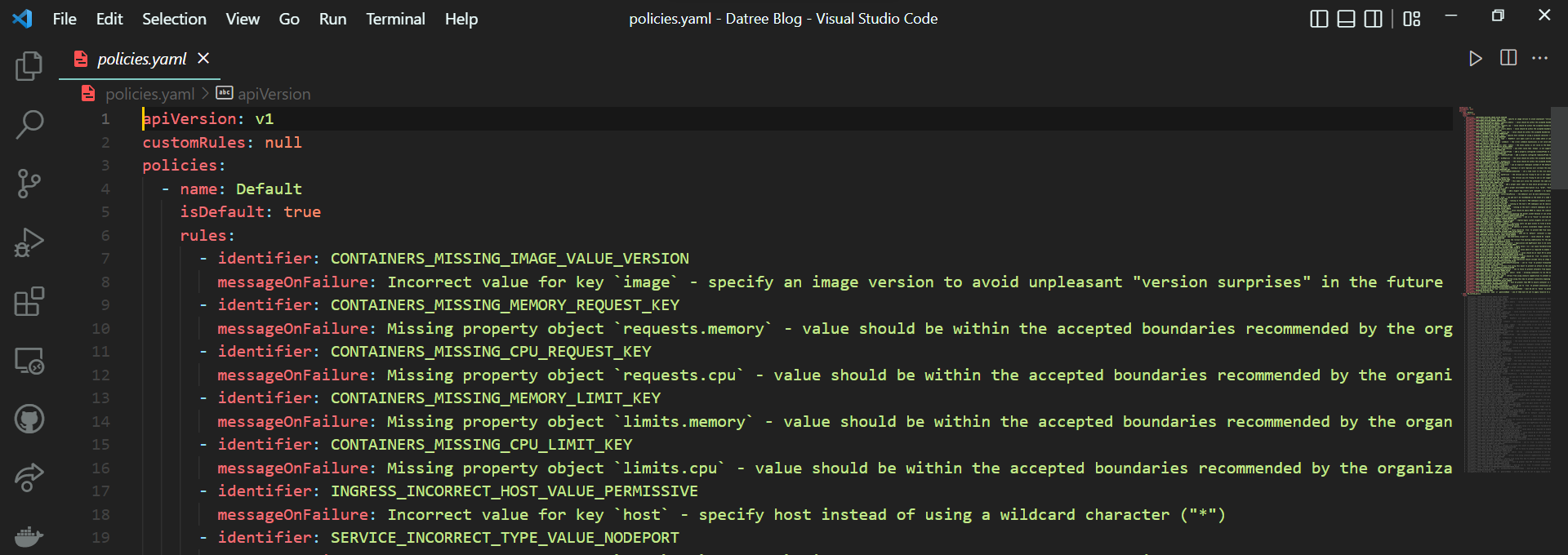
You can map your custom policies which you made using the name tag inside the policies file and inside the rules you can comment / uncomment any policy which you want and you can also define your custom failure messages inside the policies.yaml file.
Publishing YAML file
After making changes in the policies.yaml file you can publish it directly to your Datree dashboard.
Steps to publish it:
- Open the folder in your terminal
- And type
datree publish policies.yamlinside it And it will be published successfully to your Datree dashboard

Check out your dashboard to see the changes.
Note: If you want to make changes from the dashboard then you have to disable the
Policy as codeslider from your settings
Reference
For more reference regarding Datree you can check out it's official documentation here.
Conclusion
I hope you now understood what is Datree and how it is used, If you have any further doubts related to it make sure to reach me out on Twitter and Showwcase 😊
Subscribe to my newsletter
Read articles from Hasnain Makada directly inside your inbox. Subscribe to the newsletter, and don't miss out.
Written by

Hasnain Makada
Hasnain Makada
As a 21-year-old Computer Engineering student, my enthusiasm lies in open-source development, particularly with Flutter. Actively contributes to "Open Source with Hasnain," channelling efforts to craft high-performance applications. Beyond technical expertise, a forward-thinking tech vision propels towards continuous growth and innovation.